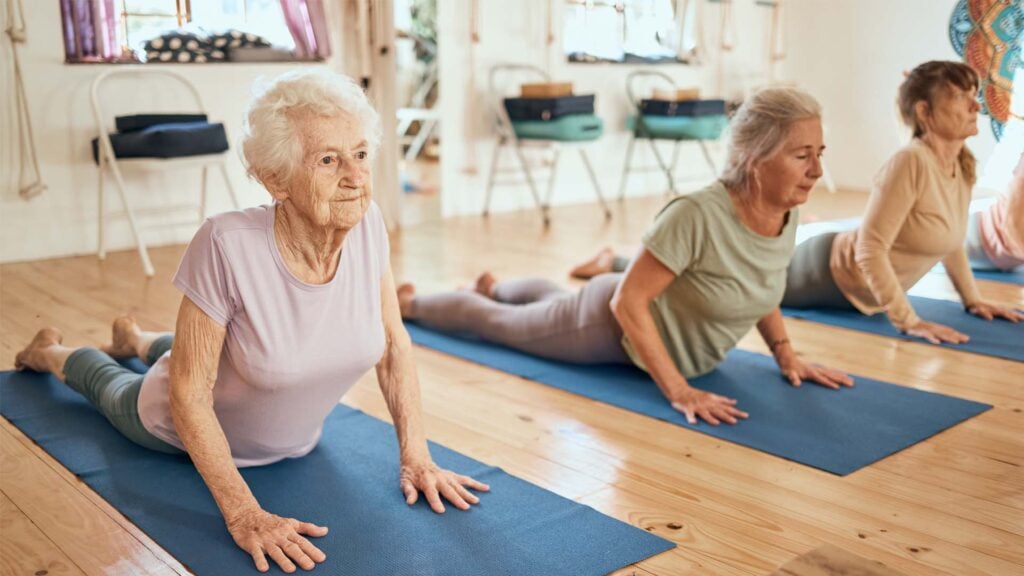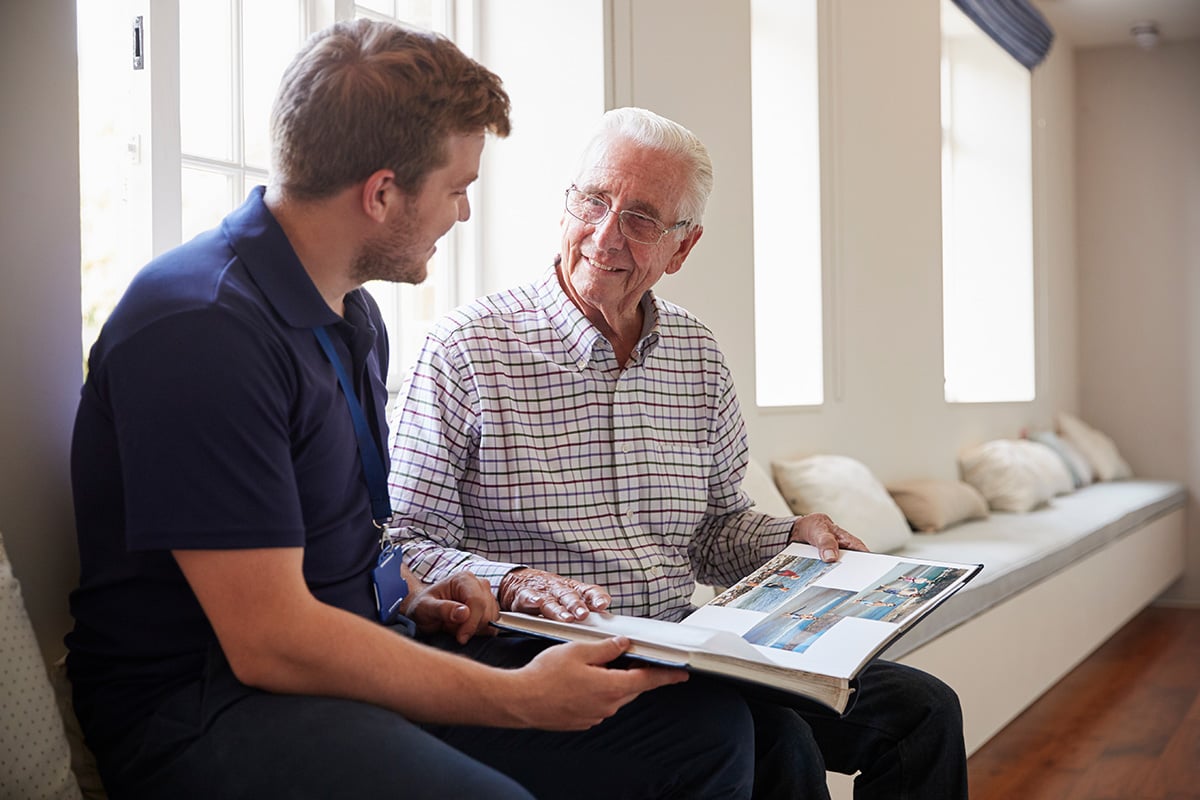Essential Tips for Aging in Place: Safe and Comfortable Living
Aging in place means living in your own home safely and comfortably as you get older. Hi, I’m Betsy O’Leary,…

Aging in place means living in your own home safely and comfortably as you get older. Hi, I’m Betsy O’Leary, a Certified Aging in Place Specialist (CAPS) and publisher of the Carolina Living Choices Retirement Guide. I’ve spent years helping retirees and their families navigate the journey of aging in place with confidence and peace of mind. In this guide, I’ll walk you through key home modifications, how to assess your readiness—physically and financially—and how to stay engaged in your community. Let’s explore practical ways to help you or your loved ones age with independence and dignity.
Observations About Aging In Place
Aging in place is about staying in your own home and community as you get older, with 90% of older adults preferring this lifestyle.
Early planning is crucial for aging in place, focusing on health assessments, financial preparedness, and necessary home modifications.
Engaging with the community and maintaining social connections significantly enhance the well-being and independence of older adults.
Understanding Aging in Place

Remaining in one’s own residence during the aging process, while also continuing to be an active member of the community, epitomizes the concept of aging in place. This approach is profoundly important for many older adults. Indeed, an overwhelming 90% of those over 65 years old have indicated a strong desire for this way of life. The significance attached to fostering a living environment conducive to independent living is paramount as it must meet the distinct requirements of seniors and support their aspirations for independence.
The success with which individuals can age in place hinges on several key factors: their health status, home design features that accommodate changing needs, and access to essential services within their communities. Vital supports such as home care assistance and local services play integral roles by contributing substantially towards preserving autonomy and promoting overall well-being among senior citizens.
Recognizing these crucial aspects serves as a preliminary step towards devising strategies aimed at assuring comfort, security, and joy throughout one’s golden years.
Early Planning for Aging in Place
It is crucial not to procrastinate when it comes to arranging for aging in place. Initiating the planning process well ahead of time enables a thorough consideration of required modifications that support continued self-sufficiency. It’s widely advised by specialists to start this preparation significantly earlier, providing ample opportunity to contemplate every aspect associated with growing older.
To plan effectively from an early stage involves evaluating one’s physical health status, securing financial stability, and adjusting the household for upcoming needs. Tackling these elements beforehand permits older individuals to establish a living environment that accommodates their present necessities while being flexible enough to account for future developments, thus facilitating a smooth transition into old age.
Assessing Physical Health
Regular evaluations of one’s health can reveal potential upcoming needs for medical intervention or aid. Recognizing your present state of health and foreseeing possible future health difficulties enables you to make knowledgeable choices concerning the necessary forms of assistance and adjustments.
With increasing age, conditions such as diminished hearing, vision loss, and reduced physical robustness tend to emerge more frequently. By tackling these issues promptly, older individuals can preserve a superior standard of living and enhanced autonomy.
Engaging in physical therapy sessions and consistent healthcare examinations is crucial in handling these changes effectively. This ensures that an individual remains vigorous and engaged to the greatest extent possible.
Financial Preparedness
Financial preparation is vital for older adults who aim to age successfully in their own homes. It’s crucial to allocate funds early on for possible home modifications and related costs, which helps establish a secure and pleasant environment suitable for aging in place.
Implementing economical approaches when planning for one’s later years can make the process of aging more manageable. This includes gaining knowledge about the expenses associated with necessary adjustments, investigating options for financial aid, and preparing ahead of time for potential long-term care requirements. Such preparedness reduces worry among older adults, enabling them to relish their advancing years with greater peace of mind.
Home Readiness
As a Certified Aging in Place Specialist, I always emphasize that even modest changes to your home can make a big difference in both safety and independence. Whether it’s adding grab bars in the bathroom, installing a stair lift, or opting for a walk-in tub, these updates help create a living space that supports you now and into the future.
I often collaborate with occupational therapists, who bring invaluable insight into what specific modifications will work best for your unique needs. Their assessments, paired with thoughtful design, ensure that your home remains not only safe and accessible but also a place where you can thrive comfortably. Features like wider doorways, no-step entries, and open floor plans aren’t just practical—they give you the freedom to move confidently through your day.
Choosing the Right Home Environment
Selecting an appropriate living environment is essential for aging successfully in one’s own home. The decision-making process should account for variables including the geographical setting, the configuration of the residence, and its level of accessibility. Residing in a remote location with inadequate cellular coverage and a scarcity of neighbors could prompt a move to surroundings that provide better support.

Homes with only one level are Favored because they remove the risks associated with navigating stairs. Having broader doorways and hallways can accommodate mobility devices such as walkers or wheelchairs more easily, enhancing safety and simplifying everyday tasks.
If modifying an existing home for increased security is not practical or cost-effective, relocating to another dwelling with an already suitable design may be the most advisable course of action.
Preventing Isolation
For older adults, preserving social ties is crucial for their mental and emotional health. Becoming involved in community events can result in heightened satisfaction with life and diminished incidence of depression. A robust connection to the community bolsters social involvement, satisfying psychological requirements like independence and interpersonal connections.
Involvement in communal endeavors allows for the formation of social bonds that mitigate loneliness and enhance mental well-being. The availability of services within the community coupled with strong social links can notably improve life quality for individuals who are aging at home.
Special Considerations for Dementia
Aging in place can be highly advantageous for those in the early stages of dementia, as it may alleviate stress and disorientation by maintaining their presence in a recognizable setting. Such an environment often lessens worry and enhances their feeling of safety.
Receiving assistance from skilled professionals or family members is essential to maintain security and promote health. For individuals with advanced dementia or Alzheimer’s disease, aging at home might not be appropriate, prompting the need to contemplate other forms of care.
Overcoming Challenges
Aging in place does come with its share of challenges, but with the right strategies and support, those challenges can absolutely be overcome. I often work with clients who are facing mobility limitations or need a little extra help with daily tasks. That’s where services like home health care, occupational therapy, and physical therapy become essential—they’re not just about assistance; they’re about maintaining independence.
I always recommend starting with simple safety upgrades: grab bars in high-use areas, brighter lighting, and removing tripping hazards like loose rugs or cluttered walkways. And when it comes to the financial side, it’s worth exploring resources like Medicaid, veterans’ benefits, or long-term care insurance to help offset costs. The key is to plan ahead so you can stay in the home you love with confidence and peace of mind.
The Role of Family in Aging in Place
Support from family is crucial for older adults who desire to remain in their homes as they age. Emotional backing from relatives provides seniors with a feeling of value and connection. Frequent check-ins by family members serve not only to assess the well-being of these elders, but also to guarantee their safety.
Economic aid provided by the family can reduce tensions associated with healthcare expenses and necessary alterations in the home. Involving relatives in making choices fosters a sensation of autonomy and strengthens seniors’ confidence in managing their own affairs.
Benefits of Aging in Place
Aging in place provides older adults with the opportunity to preserve their independence and self-determination within a recognizable setting, greatly supporting their emotional health and personal identity. Opting to live at home can often be more financially advantageous than residential care, circumventing various expenses associated with long-term care.
Remaining in one’s own residence may safeguard against healthcare-related infections that are frequently encountered in nursing homes, thereby reinforcing the advantages of aging in an individual’s own environment.
Creating a Safe Living Space

Ensuring a secure environment is crucial for individuals who are aging and wish to remain in their homes. Potential hazards within the home, such as tripping dangers, insufficient shower support, and blocked walkways, should be addressed. Implementing safety measures like installing night lights and discarding loose rugs can help mitigate the risk of mishaps.
Occupational therapists suggest various home modifications to bolster security for those aging in place. These include upgrading lighting conditions and fitting chair lifts. Having a medical alert system installed at home serves as an effective contingency plan during emergencies, offering comfort through immediate assistance when needed.
Engaging with the Community
Engagement with the community plays a vital role in maintaining both the mental and physical well-being of older individuals. The presence of social ties diminishes feelings of solitude and offers critical emotional backing. Older adults who experience social seclusion stand at an increased likelihood of encountering severe health complications, underscoring the heightened importance of their participation in communal life.
The utilization of technology, including platforms like social media or video conferencing tools, can serve as conduits for sustaining contact with relatives and companions. Involvement in local events and joining support networks are additional strategies that contribute to enhancing mental health and counteracting feelings of isolation among seniors.
Resources for Aging in Place

Numerous services and initiatives have been established to facilitate aging in place for older adults. Programs such as the Aging in Place initiative by Partners for Livable Communities offer significant resources. Senior centers alongside Meals on Wheels and adult day care facilities provide vital assistance essential to this demographic.
To aid in preserving autonomy and ensuring safety within their homes, older individuals can utilize technology designed specifically for these purposes. Family members who provide caregiving can benefit from educational opportunities and support services made available through endeavors like the National Family Caregiver Support Program (NFCSP).
Summary
In essence, the concept of aging in place provides older individuals with a chance to preserve their autonomy and live comfortably within their personal residences. Initiating early preparations, making suitable home alterations, ensuring financial readiness, and actively participating in community life constitute crucial elements for thriving while aging at home.
Seniors can look forward to experiencing their advanced years with self-respect and assurance by adopting a proactive approach and tapping into existing resources. Engage in the process of aging in place by crafting a secure, nurturing, and satisfying living space for oneself or your cherished family members.
Frequently Asked Questions
What is aging in place?
Aging in place means being able to stay in your own home and community as you get older, enjoying independence and comfort in familiar surroundings.
It’s all about creating a supportive environment that allows you to thrive at home.
Why is early planning important for aging in place?
Early planning is crucial for aging in place because it helps you evaluate necessary changes to your home and lifestyle, ensuring you can maintain your independence.
It also means you can allocate resources wisely for a smoother transition as you age.
What are some common home modifications for aging in place?
To make your home safer as you age, consider adding grab bars in the bathroom, installing a stair lift, using walk-in bathtubs, and improving lighting.
These simple changes can really help prevent falls and keep you independent longer.
How can community engagement benefit older adults?
Community engagement can significantly boost older adults’ mental and physical health, helping them feel less lonely and more connected.
It fosters emotional support and a strong sense of belonging in their lives.
What resources are available for aging in place?
There are so many wonderful resources out there to support aging in place—it just takes knowing where to look. I often point people to local senior centers, which offer everything from social activities to wellness programs. Meals on Wheels is another great service that ensures nutritious food is delivered right to your door.
There are also financial assistance programs that can help cover the cost of home modifications or in-home care, and caregiver training for family members who are stepping into supportive roles. Don’t forget about technology, either—things like medical alert systems, smart home devices, and video call tools can really enhance safety and connection.
The goal is always the same: to help you feel secure, supported, and comfortable in your own home.







